Mount Ijen, Indonesia (CNN)It
has been more than 64 years since Mount Ijen last erupted, but the
volcano is still very much alive, and it is being mined by some of the
toughest men in the world.
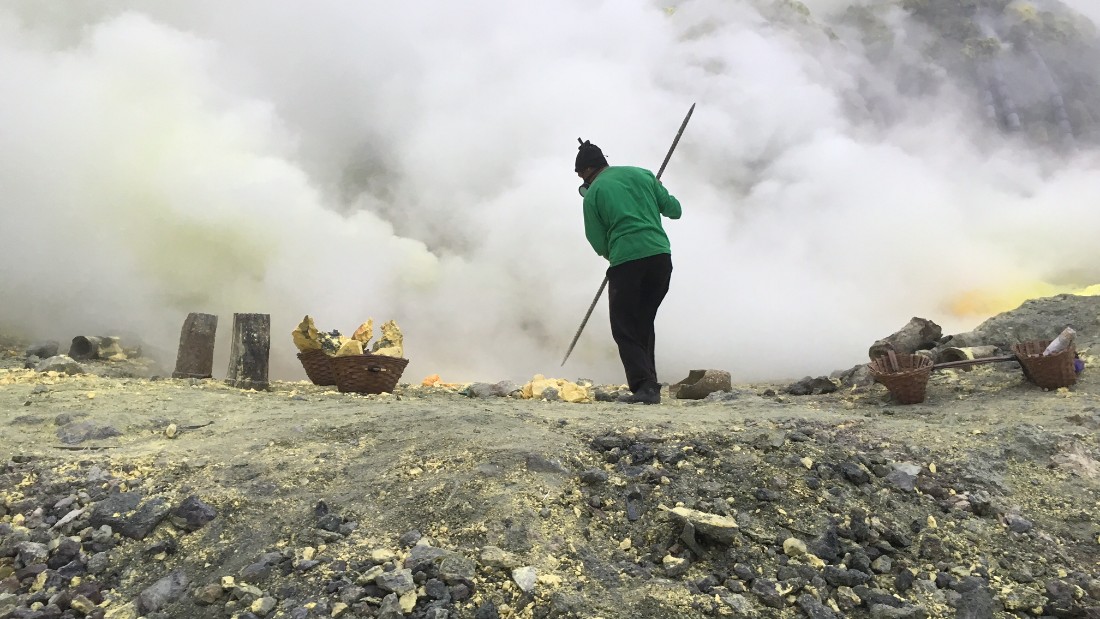
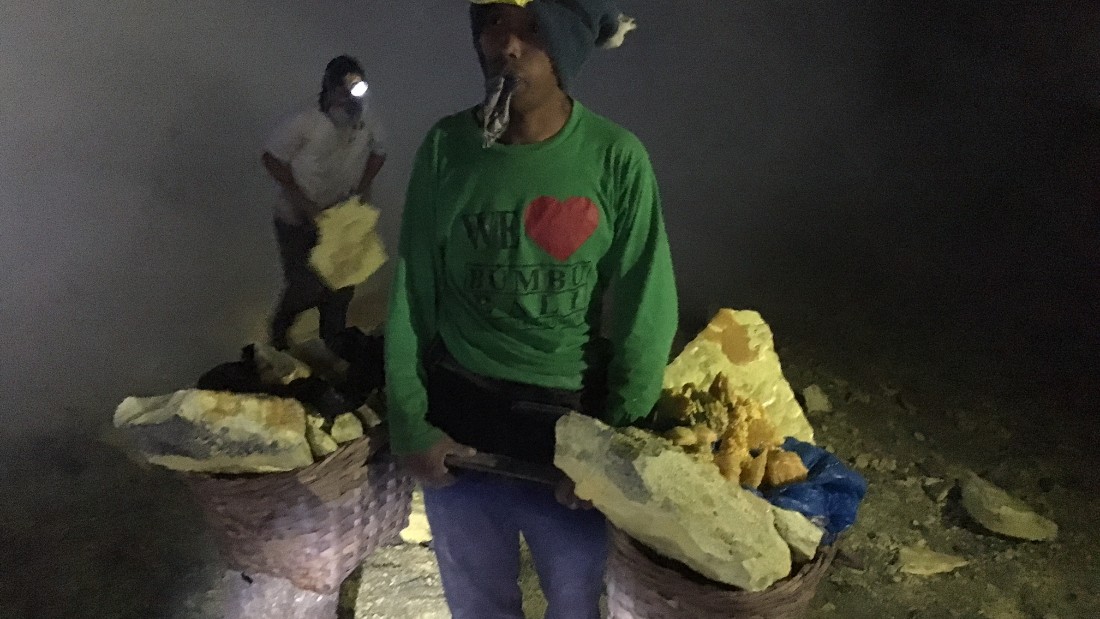
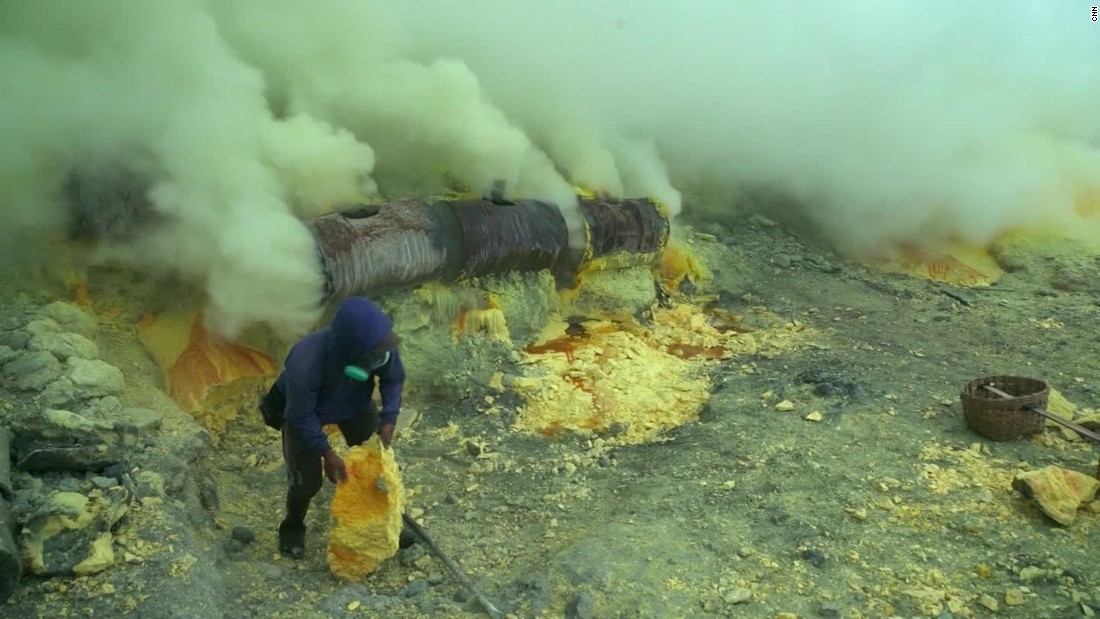
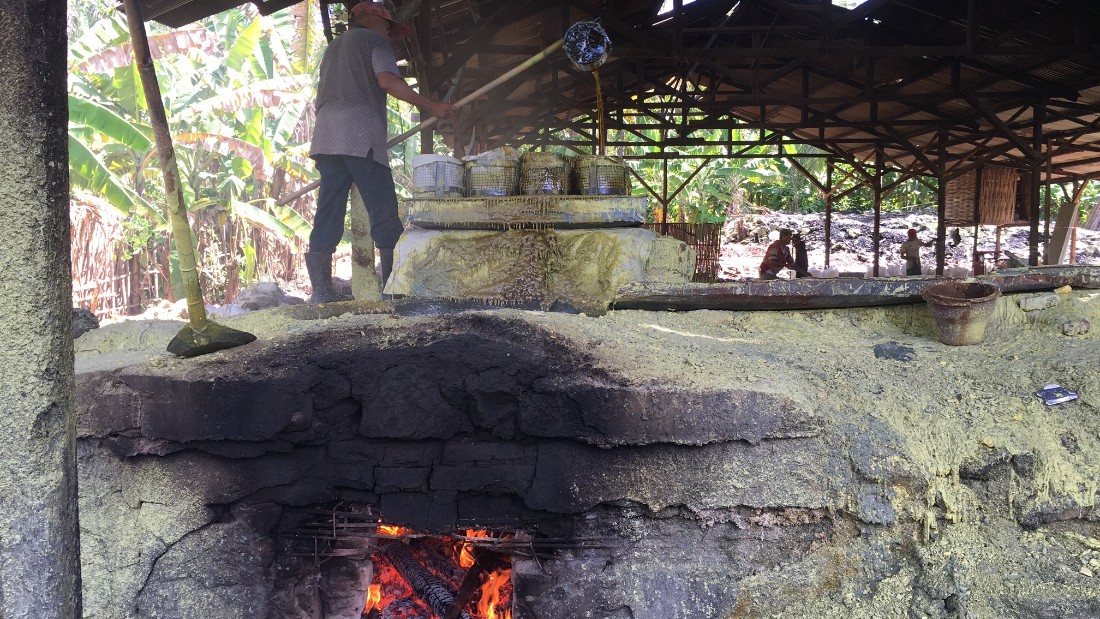
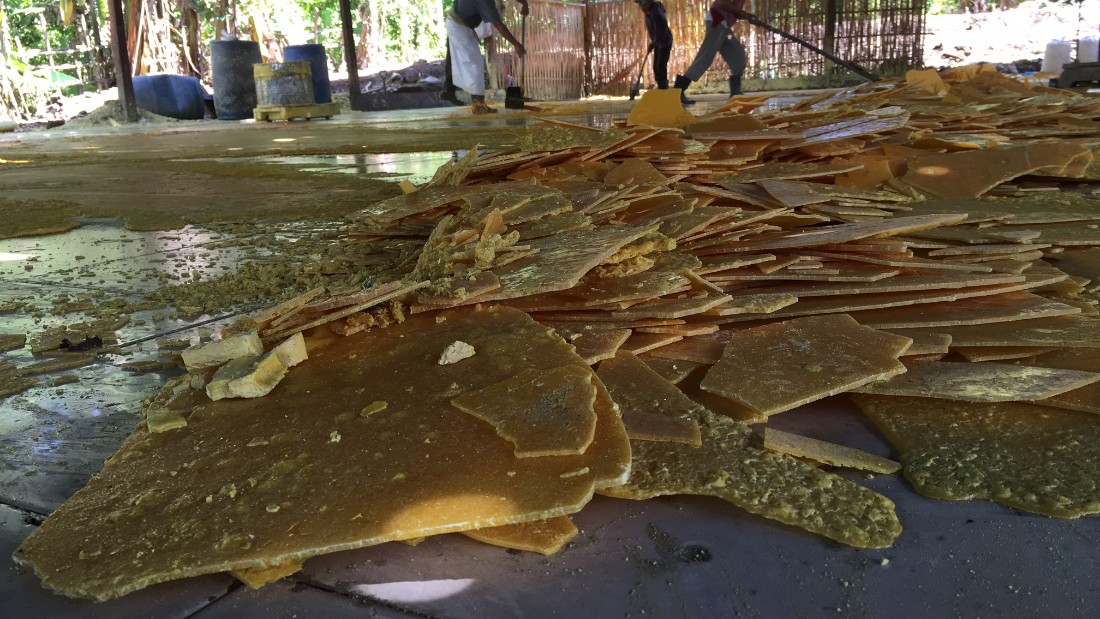
They begin work shortly after midnight with a long hike up the volcano.
It's
exceptionally dark because the air is thick with volcanic fumes which
start to burn our sinuses with an acrid, sour smell halfway up the steep
trail.
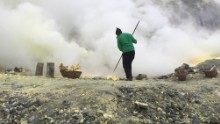
Thick tropical foliage gives way to barren rocks and visibility reduces
to barely a meter, even in the direct beam of a flashlight. The
headlights worn by miners and tourists making their ascent barely pierce
the heavy gloom. At the lip of the crater, some 2,600 meters above sea
level, the density of the fumes dramatically intensifies. Only a
serious gas mask -- the type normally worn to protect from tear gas in
riots -- protects our eyes and lungs from the toxic fumes.
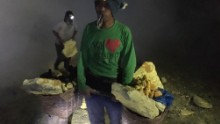
A tourist from Thailand, overwhelmed by
the volcanic gasses, suffers a panic attack in the dark. She coughs and
weeps, begging her companion to abandon the volcano.
Into the belly of the beast
The subsequent descent into the crater is steep and treacherous, a rocky path slippery with condensation.
It is here, halfway down the crater, that we first spot the volcano's blue fire flashing through the dense fog and smoke.
Tongues
of blue flames ripple up the crater walls like reverse waterfalls. This
is the spontaneous combustion of subterranean gasses as they seep out
into the night air. Temperatures can exceed 400 degrees Celsius (752
Fahrenheit).
The air may be poisonous, but these cobalt fireworks are magical.
According to Peter Kelly, a gas geochemist with the USGS, they are also quite rare.
"Ijen
is remarkable in that it has sustained the special conditions that lead
to the occurrence of the blue flames for a long time," Kelly told CNN.
At the bottom of the crater the scene grows even more surreal.
Here,
a dozen Indonesian men work in the dark, using long metal poles to
break off chunks of yellow crust from the crater floor. They are
harvesting sulfur. This hard, chalky mineral builds up around vents that
belch out clouds of grey and yellow smoke from inside the volcano.
When dawn breaks, it reveals a lake just a stone's throw away from where the miners are working.
The crater lake is a milky blue, with fumes billowing across its surface.
The
water in the lake is warm to the touch and 200 meters deep. The lake is
also heavily acidic, the result of volcanic gases like sulfur dioxide
dissolving into the water. Merely dipping a few fingers into the water
leaves the fingers burning because of small, unseen cuts.
Periodically, the wind shifts the direction of the smoke, which envelopes the miners in hot clouds of volcanic gas.
At those moments, the men cough and retch, struggling with the fumes.
"No mask!" says a miner with a choking laugh. He points at the gas masks we are wearing.
Like
most of the other miners here, this man is equipped with little more
than a rag stuffed in his mouth that he sucks on to help cope with the
poisonous gas.
He goes by a single
name, Mistari, as is often the case on the large Indonesian island of
Java. Mistari says he has spent years mining the volcano.
Mistari
and the other miners break off chunks of sulfur ore and load them into
pairs of baskets attached at opposite ends of a long bar of wood.
Each
man focuses intently on perfectly balancing the heavy load between the
two baskets. This is of vital importance, because the miners are about
to haul the baskets up the treacherous trail that leads to the top of
the crater's lip.
It is a back-breaking journey.
'I don't want my son to work like this'
As
he begins the steep hike, Mistari wheezes under the weight of the
baskets. Over the years, this burden has left a deep, permanent groove
on his shoulder. He is carrying a man's weight in sulfur on his
shoulders, roughly 80 kilograms of ore.
"The smoke burns my eyes but it's not poison," he insists.
"I've gotten used to this work, so it doesn't really hurt me."
Mistari
is 42 years old. It takes him about a half hour to complete the hike to
the top of the volcano. It is the first of two such trips he typically
makes a day.
"I never get back pain," he explains. "Just my knees hurt a bit."
The company pays him the equivalent of around 8 U.S. cents per kilo of sulfur.
Mistari says on average, he earns the equivalent of $12 a day.
At the top of the crater, some of the miners transfer their sulfur to small trolleys which they then haul down the mountain.
One miner, named Osen, doesn't have that luxury.
"I can't afford a trolley so I have to carry my sulfur down," he tells me.
Osen
stops at a weigh station and hangs his baskets on a crude scale. The
man is hauling 95 kilograms of sulfur a distance of roughly four
kilometers.
"It's hot here in my back," he says, pointing at the spot on his shoulder where he carries the heavy load.
The
miners insist they make good money at what may be one of the world's
most physically demanding jobs. Most of them would otherwise work as
farmers, earning much less.
That said, Mistari says he does not want his 14-year-old son to follow in his father's painful footsteps.
"No, no, I don't want my son to work like this," he says, shaking his head.
'I've never heard of anything like this'
An
executive with the sulfur mining company PT Candi Ngrimbi says with the
help of miners like Mistari, it produces some 13 tons of raw sulfur a
day from the Ijen volcano.
"We
give the miners paper masks, but they rarely wear them," Budio Prawito,
an executive in the company's finance department, tells CNN. "They
prefer to use towels or clothes."
The
sulfur mining company says it provides health insurance to 107
registered, full-time miners. Job qualifications appear simple.
"It's easy," Prawito says. "We see how fit and strong they are to carry sulfur. Usually we accept young, healthy people."
Terry
Gordon, a professor of environmental medicine at New York University's
School of Medicine, says no one has studied the impact of long term
exposure to such high levels of volcanic gases, including sulfur dioxide
and hydrogen sulfide. The miners "are sort of the test subjects," he
says.
Short-term exposure to sulfur dioxide is linked to airway constriction and asthma symptoms.
U.S.
regulators recommend limiting regular workplace exposure to two parts
per million -- USGS scientists have found levels more than 30 times that
near to the site where the Ijen miners work.
Gordon
believes the miners have likely adapted in a way that lessens their
discomfort, but the conditions could still cause harm.
"That
there are humans working in those conditions, I think it's
unparalleled. I've never heard of anything like this," Gordon says.
"That these guys can take these toxic gases day after day, it's amazing."
Factory in the jungle
In the end, the sulfur is trucked down to a crude factory in the middle of the tropical jungle.
Wood-fired
ovens heat giant cauldrons where workers melt chunks of sulfur ore down
to a liquid. A stream of molten sulfur flows down a wooden sluice and
through filters that help purify it.
A
factory worker dumps big vats of liquid sulfur onto a wide floor. There
it quickly solidifies into a bright yellow crust which is broken into
pieces and loaded into sacks.
The
volcanic sulfur is primarily used to purify sugar at nearby sugar
factories. The mineral is also used to make soap, skin treatments and
explosives.
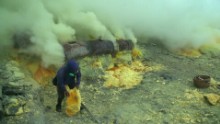
Workers at the sulfur
factory say they are paid half of what the miners earn wheezing and
grunting in the crater. "Working here is much better," explains Ahmad
Supanpi, as he shovels wood into the ovens.
Among the factory workers is 60-year-old Sapii, who retired from mining the volcano.
"I don't have the strength to work on the mountain any more," he says.
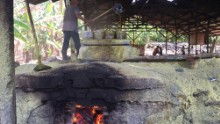
Although
it has been four years since he left the volcano, his shoulders are
still grooved and pock-marked from years of hauling sulfur up the
crater.
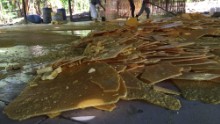
He insists his time in the volcano have not left him with any permanent health problems aside from "an ordinary cough."With that, he goes back to scooping the volcano's yellow harvest off the factory floor.

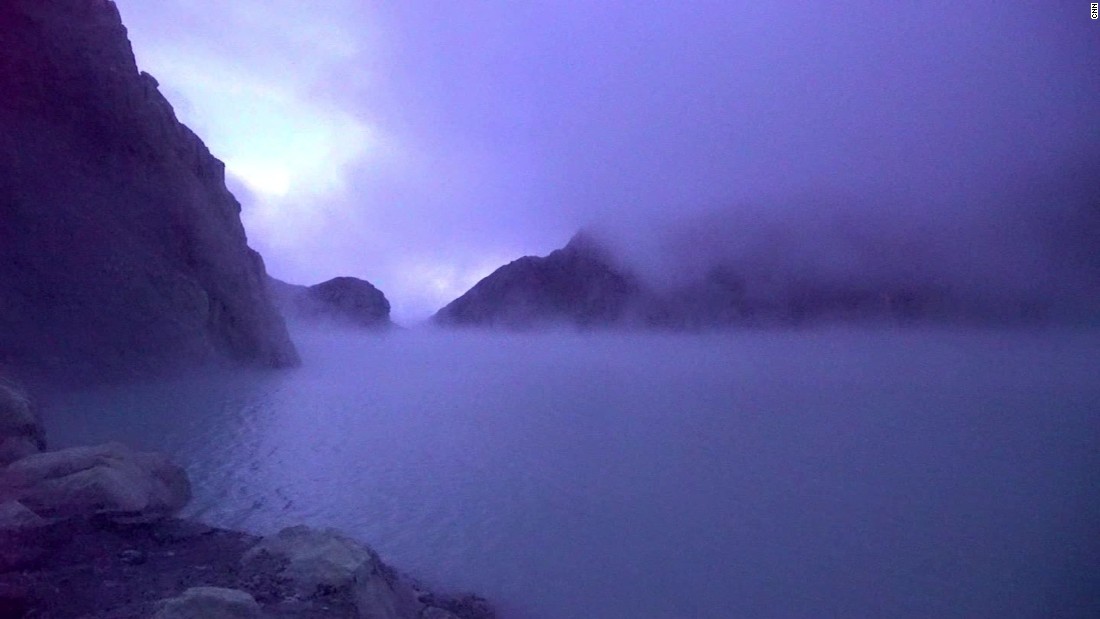
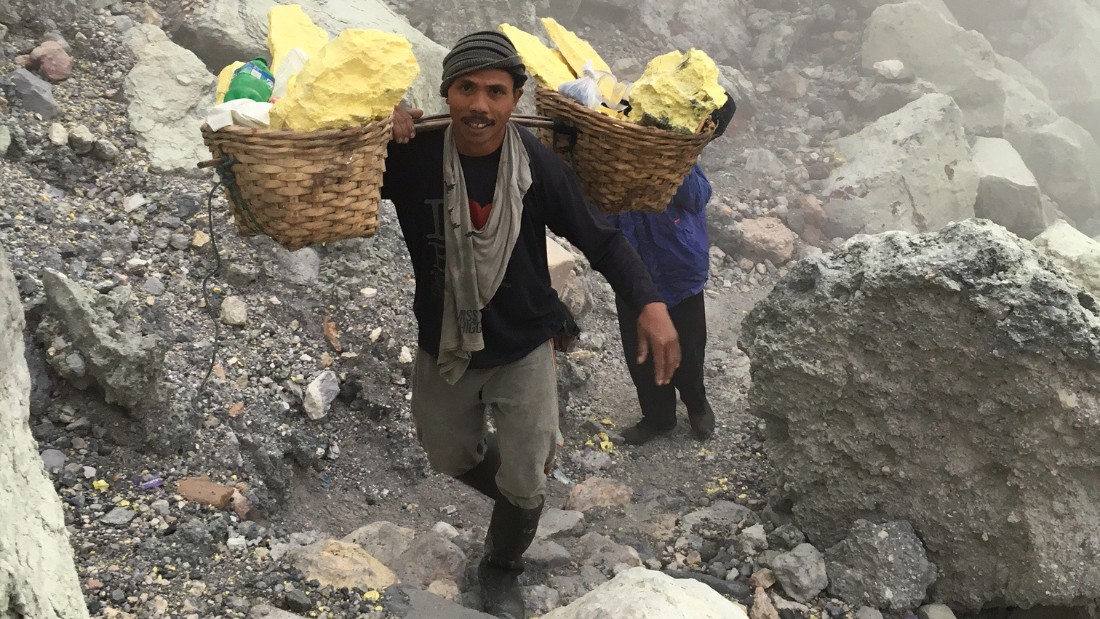
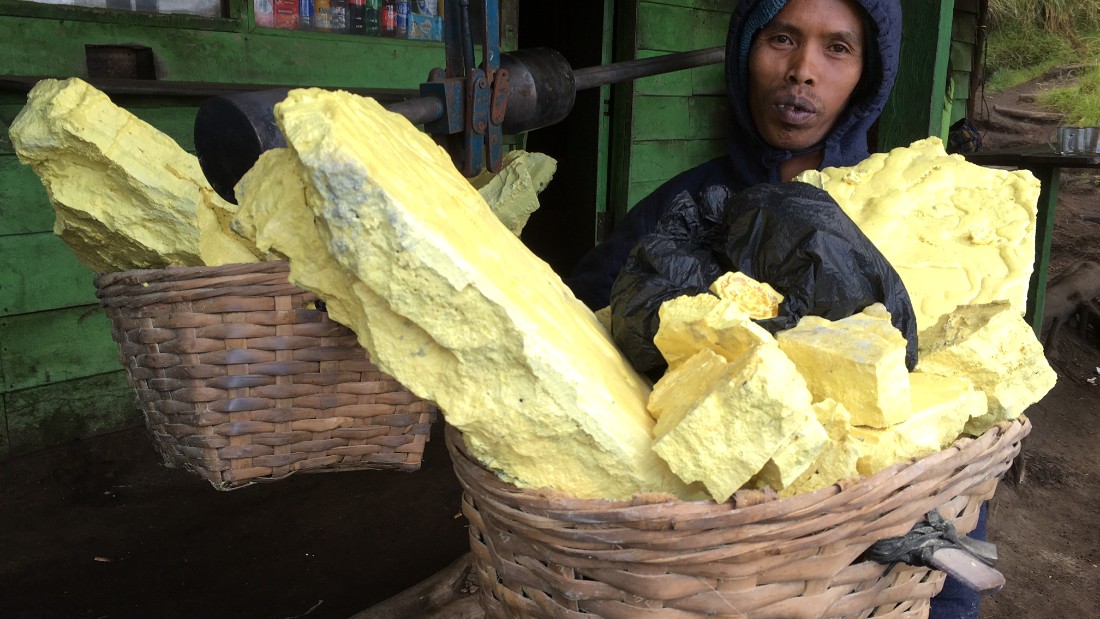
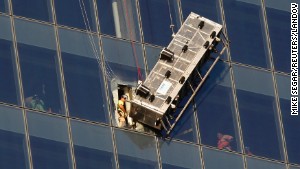
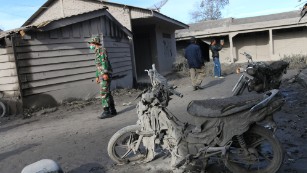
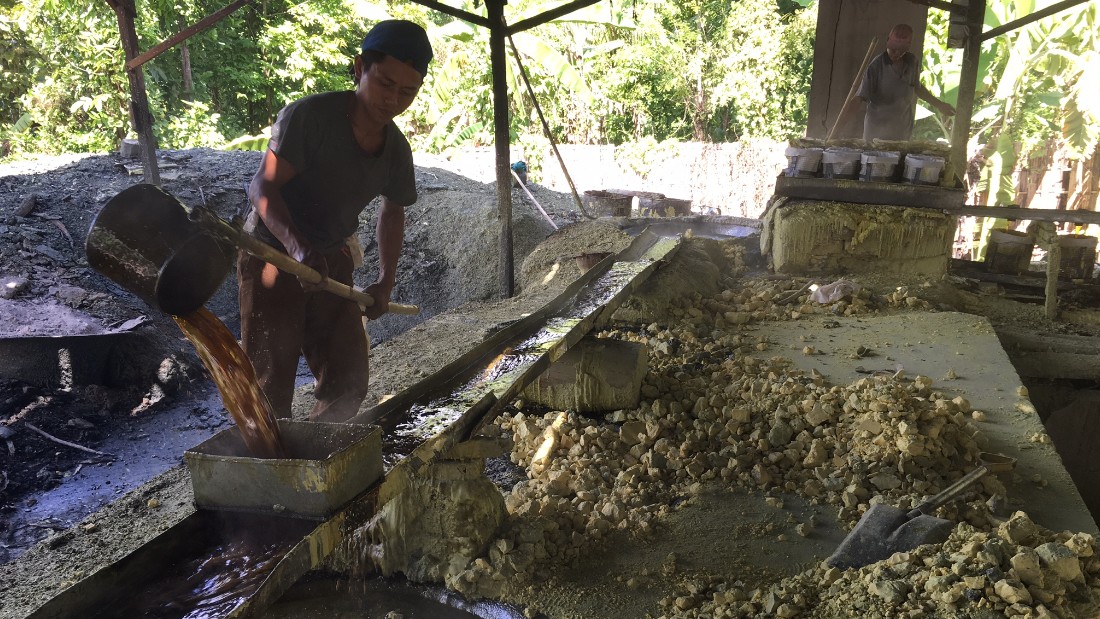







No comments :
Post a Comment